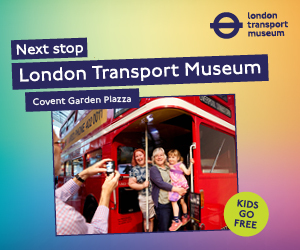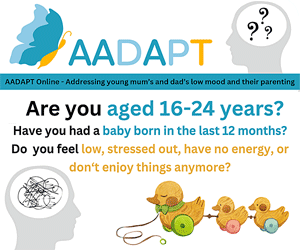Primary Times - the definitive what’s on and where to go family guide of activities and events for children of primary school age. Things to do with your kids during the school holidays including arts and craft activities, music and theatre for children, parties, competitions, days out, and family attractions along with term time drama schools, dance classes, after school clubs and sports activities. Things to do at a place near you!
How Kids Can Make a Splash in Environmental Conservation with The SuperQuesters
 Dr Dot (STEM Scotland Ltd) has teamed up with QuestFriendz and the SuperQuesters to offer some top tips to help clean up our rivers. The SuperQuesters in their latest book, The Case of the Angry Sea are searching to find ways to clean up their local river. Dr Dot looks at what is happening to our oceans and give some tips to get children involved to build their awareness of our environment plus how to make your own river cleaning machine.
Dr Dot (STEM Scotland Ltd) has teamed up with QuestFriendz and the SuperQuesters to offer some top tips to help clean up our rivers. The SuperQuesters in their latest book, The Case of the Angry Sea are searching to find ways to clean up their local river. Dr Dot looks at what is happening to our oceans and give some tips to get children involved to build their awareness of our environment plus how to make your own river cleaning machine.
Things you wouldn’t want to see in a river
Who doesn’t love the beach? Or a river walk on a lovely spring day? Close your eyes. Can you picture it...? Aahh! But - how often is this vision ruined by the unwelcome sight of some bottles bobbing about, a plastic bag or two, or even the legendary shopping trolley? Worse than this, our whole planet is in danger from the effects of pollution in its many forms, water pollution being just one.
Why cleaning rivers is important
Any rubbish flowing along our rivers finds its way to the sea. No surprise really. But did you know that the effects of thousands of rivers and streams, all around the world, flowing into our oceans mean that...
...by 2050, the combined weight of plastic in the ocean will be more than the weight of all the fish?
So where does all this plastic go?!
The Great Pacific Garbage Patch
Plastic pieces in the ocean can travel vast distances, moved by wind and ocean currents. These currents meet and circle round each other in gyres (swirly formations of water) - that are now filling up with plastic.
Not only that;
The largest gyre, the Great Pacific Garbage Patch, is 5.5x the size of the UK, and 25% of the Earth’s surface is now covered with plastic pollution in these gyres.
But what’s the problem with plastic?
Plastic doesn’t decompose easily or quickly, so it builds up in our environment and is easily washed into waterways. Animals and birds can mistake plastic for food and eat it; they become “full” with something that isn’t food - so effectively starve. Plastic builds up in food chains, and eventually humans can consume this plastic too.
What can we do about this plastic and pollution problem?
The number one thing we need to do is to get our kids involved. Children are naturally curious, often environmentally conscious, and absolutely wonderful problem-solvers.
So how can we foster this natural curiosity, drive and perseverance and harness our kids’ amazing qualities so we can raise awareness, clean up our waterways, and try to SHRINK THESE GYRES?!!
My Top 5 Tips to get your kids involved
💧Go for a walk to your local river or stream, pick a section where you can stand safely, and count how many objects you can see in the water that shouldn’t be there. Observation is a key science skill and this will really strengthen it. You can also encourage some friendly competition between siblings!
💧 Ask your local school or PTA if they have an Eco group. If not, would they be interested in starting one? Gather some pupils (and Parents & Teachers!) and find out about things like waste, energy and recycling in your school. Then make a plan for how you could reduce waste and energy, and agree other fun activities like making bird feeders or planting a garden – you will know what will work best for your school. The possibilities are endless!
💧 Just have a chat with your kids! I'm constantly fascinated by what kids know about – are yours already aware of pollution and other environmental issues or even feel quite strongly about this? Or want to learn more? Talking together is probably one of the most powerful (and immediate) things you can do.
💧 Play Pooh Sticks, the game from the classic children’s tale “Winnie The Pooh”! Pooh (a toy bear) and his friend Piglet each drop a stick into the river while standing on a bridge, then race to the other side of the bridge to see whose stick “wins”. Try this with your kids, they will love it! It really brings home just how beautiful a flowing river is, how powerful, and conveys the importance of clean waterways much more than words can do.
💧 Make your own River Cleaning Machine out of everyday objects! How to make your own river cleaning machine out of everyday objects
You will need:
- 2litre plastic drinks bottle (to make the hull)
- Small plastic colander or fishing net (to “catch” the rubbish)
- Egg box (this is the Garbage Sorter)
- Paper drinking straw (for the mast)
- Piece of card (for the sail)
- Thicker card (eg cereal packet or delivery box) to stabilise your boat
- Scissors & masking tape
- Stickers & waterproof pens or paints to decorate (optional – but fun)
How to Build Your Boat:
1. Cut the plastic bottle in half along its length
2. Push the egg box bottom (garbage sorter) into the back of the boat and secure with tape
3. Tape the colander (garbage collector) to the front of the boat
4. Cut a triangle of card to make the sail
5. Stick the straw “mast” to the sail and push the mast into the top of the egg box
6. Cut the thicker card the same length as the boat hull and secure to the bottom of the boat with tape. This will stabilise your boat and help it to float.
Decorate your finished water-cleaning boat with stickers or paints!
Now it’s over to you and your kids! Time to test your water-cleaning boat – does it float? Try it in the bath or sink before heading down to a river or local pond. What did it catch? Leaves? Twigs? Sweetie wrappers? Tip each find into a different section of the garbage sorter – just like the SuperQuesters! Your river is a little bit cleaner now – well done!





